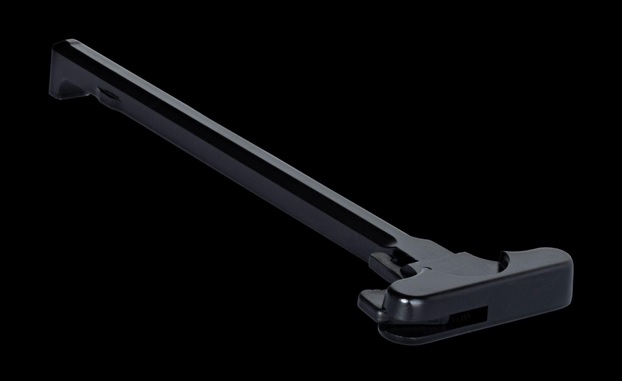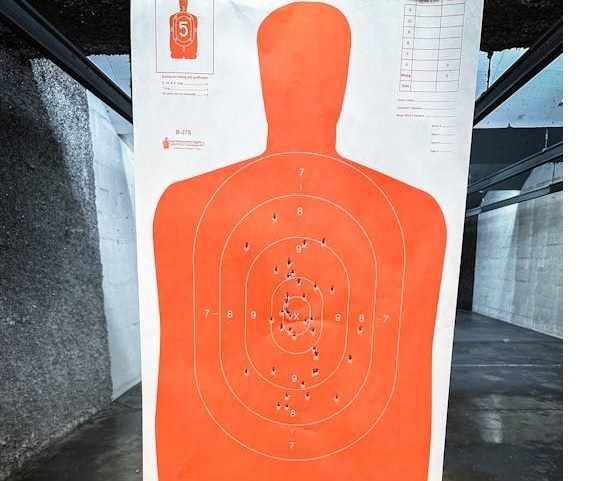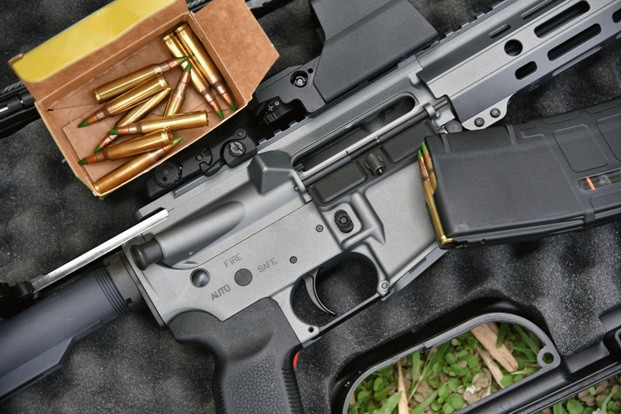Thinking about building an AR with an upper, lower, and a build kit? Here are some of the prime considerations you’ll need to make when choosing parts.
Choosing a Caliber
The first and most important decision you will need to make has to do with caliber. There are a wide range of AR calibers out there ranging from .22LR to .223/5.56, .300 BLK, 6.5 Creedmoor, .350 Legend, all the way up to .50 Beowulf.
Consider your intended use of the rifle. Is this for plinking, competition, long-range shooting, defense, hunting, or some other discipline? Some cartridges are good for some but not for others. This is the first decision you will need to make.
Stripped vs. Assembled Uppers
Bear in mind that there are both stripped AR uppers and complete, assembled uppers. In the former case, it is just a piece of forged or machined aluminum and you will need to buy the BCG, barrel, handguard, muzzle device, charging handle, ejection port cover, forward assist, and all related hardware.
By contrast, complete upper receivers are generally much more convenient for builders who want a solution that comes with all the parts. However, with a stripped upper you can completely customize the build. The choice is yours.
Barrel: Material, Length, Rate of Twist
Whether you go with a stripped or assembled AR upper, you will also need to consider the barrel in terms of the following.
Barrel length: The three most common AR barrel lengths are listed below.
- 16”: This is as short as you can go without getting a tax stamp from the ATF pursuant to the NFA. Shorter barrels make a lighter rifle and one that is more maneuverable in tight quarters, but at the expense of accuracy at greater ranges.
- 18”: A rifle with an 18” barrel offers a decent middle ground between handling and accuracy.
- 20”: An AR with a 20” barrel will be heavier and harder to handle but this length is superior for accuracy at greater ranges and so is a good choice for competition, long-range shooting and hunting.

Barrel material: Some common AR barrel materials are as follows
- 4140: A very common barrel type with .4% carbon in the alloy.
- 4150: Another common barrel material with .5% carbon in the alloy; it offers slightly higher strength.
- CMV: This stands for “chrome-moly-vanadium,” which elements are included in the steel alloy, making it harder, stronger, and more durable.
- Stainless steel: Some AR barrels are stainless steel, typically 410 or 416 stainless. These are better in hot, humid environments where rust is a serious concern.
Rifling and rate of twist
Button vs. cut rifling: Button rifling is more affordable and produces a serviceable result, but cut rifling is more precise and offers greater accuracy despite the higher cost. If you need a precision rifle barrel, look for one that has cut rifling as well as a hand-lapped bore.
Rates of twist: The most common AR rifle twist rates are 1:7, 1:8, and 1:9. Twist rates of 1:7 are better for shorter barrels and heavier projectiles. As for 1:8, it’s very common in civilian rifle barrels and used with 5.56/.223. With respect to 1:9, it’s better for lighter bullets. You may also encounter a 1:10, which is a good all-around twist rate. For a heavier bullet like .350 Legend, a twist rate of 1:16 might be better.
Handguards: Picatinny, KeyMod and M-LOK Rail Systems
Picatinny rail systems are among the most common in the industry, and are compatible with a wide range of shooting accessories.
However, both KeyMod and M-LOK rail systems are growing in popularity and are lighter than Pic rail systems. They require special, compatible shooting accessories, though.
Bolt Carrier Group: Coatings
You will also have to select a bolt carrier group for your AR upper. Two of the most common are phosphate (mil-spec) and hard chrome BCGs. The former is on the more affordable side and is easy to care for but will require more liquid lubrication to keep it working nicely.
There are also a wide range of modern BCG with specialized permanent coatings, like black nitride, diamond-like carbon, titanium nitride, and nickel boron, all of which are more expensive than mil-spec coatings but which offer permanent dry lubricity and easier maintenance.
AR-15 Charging Handles

There’s nothing wrong with a mil-spec AR-15 charging handle but there are better, ambidextrous models that are easier to use with gloves; some of these designs also help to port gasses away from the shooter’s face, which is another benefit.
Muzzle Devices: Flash Hiders and Muzzle Brakes
There are three main types of muzzle devices you will have to consider if you go with an assembled AR upper: flash hiders, muzzle brakes, and suppressors.
- Flash hiders obstruct the muzzle flash, which helps keep a clear sight picture for the shooter and which can also help conceal a shooter’s position.
- Muzzle brakes alter the manner in which gasses are ported at the muzzle, not only obstructing the muzzle flash but in some cases cutting felt recoil by 50% or more without adversely affecting shot power.
- Suppressors, AKA silencers, are an NFA item that both obstruct the muzzle flash and cut recoil while also massively reducing muzzle blast. They are very expensive and hard on the rifle’s gas system and action, though.
Sights and Optics
When building out your AR upper, you will also need to consider sights and optics.
While it is your prerogative to build an AR with advanced optics, we advise always to include backup AR-15 sights on the build. They are cheap, easy to install, cannot shatter, need no batteries, and are waterproof, shockproof, dust proof, and work just fine in the dark as long as you can see. A good pair of offset backup AR15 sights is a good thing.
As for optics, you have:
- Scopes: These can be either fixed or variable magnification; either way, they are the top choice for long-range and precision shooting.
- Red dot sights: These are parallax free, allow you to shoot with both eyes open, and enable fast target acquisition, especially on moving targets.
- Reflex sights: Reflex sights also offer a wide open sight picture and fast target acquisition, especially at close ranges.
- Holographic sights: Despite the cost and bulk, holographic sights are extremely durable and are suitable for engaging targets at close and medium ranges.
Starting with an AR Upper: Get It Here

This is just a primer; each section in this article could by right spawn an entire offshoot full of information. It is just a place to start.
If you have questions - and you likely should - contact us before buying your AR upper. We’d be happy to help or just to point you in the right direction.

